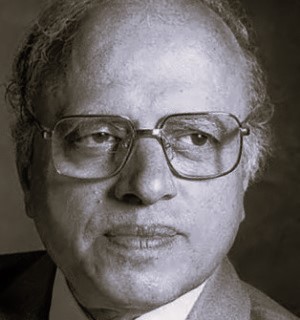Apr 14, 2025
Apr 14, 2025
From Famine's Shadow to Feeding a Nation
 In an era where survival hung precariously on the precipice of famine, what force could propel India to become an agrarian titan? Who dared to envision a nation, previously tethered to food imports, emerge as a self-sufficient powerhouse? The answer lies in the indomitable spirit of M.S. Swaminathan, a visionary who transcended destiny.
In an era where survival hung precariously on the precipice of famine, what force could propel India to become an agrarian titan? Who dared to envision a nation, previously tethered to food imports, emerge as a self-sufficient powerhouse? The answer lies in the indomitable spirit of M.S. Swaminathan, a visionary who transcended destiny.
A Destiny Rerouted by Calamity
Picture a young, aspirational individual on the brink of a promising medical career. Now, imagine the harrowing Bengal famine of 1943, claiming millions, rerouting this individual's life trajectory. The cataclysm, a byproduct of political agendas rather than nature's whim, witnessed Swaminathan trading stethoscopes for soil, influenced by Gandhian principles. This selfless pivot marked the genesis of India's march towards food sovereignty.
The Architect Behind India's Green Renaissance
Swaminathan's demise on September 28th, aged 98, left behind a legacy of revolutionary agricultural strides. Championing the adoption of high-yield rice and wheat variants, he ushered in an era where India metamorphosed from a nation reliant on food imports in the 1960s to an agrarian behemoth by the mid-1970s. His alchemy with crops not only debunked grim prophecies of food shortages but also laid the foundation for India's reigning status as the world's predominant rice exporter, cornering an astonishing 40% of the global market as of 2022.
Yet, beneath these stellar achievements lies an oft-overlooked narrative: the collaboration with Norman Borlaug. The "green revolution", symbolized by the proliferation of sturdier, shorter grain variants, would have remained a distant dream without this synergistic partnership. The resounding verdict? In Borlaug's words, Asia might never have witnessed its agrarian transformation without Swaminathan's catalytic influence.
The Challenges Looming on the Horizon
Despite monumental advancements, the shadow of climate change casts an ominous pall over global food security. Erratic monsoons, devastating floods, and scorching heatwaves serve as stark reminders of nature's wrath, with India's agricultural prowess hanging in the balance. In Swaminathan's prescient words from 2011, the shifting climatic paradigms signal that relying on age-old agricultural practices is akin to skating on thin ice.
While Swaminathan's disciples spearhead the development of climate-resilient crops, the challenges are multifaceted. Techniques once celebrated during the green revolution now stand as potential environmental adversaries. The repercussions of mechanical irrigation and intensive monocultures underscore the imperatives of sustainable practices.
A Quest for the Next Agrarian Odyssey
Could Swaminathan's vision guide us towards a revamped, eco-friendly agricultural revolution? As we bid adieu to this luminary, the onus rests on global leaders to marry innovation with sustainability. In an epoch defined by climatic uncertainties and degrading ecosystems, will the world heed Swaminathan's clarion call and champion a new, greener agrarian frontier? Only time will tell, but one thing is clear: the seeds of transformation have already been sown.
14-Oct-2023
More by : P. Mohan Chandran